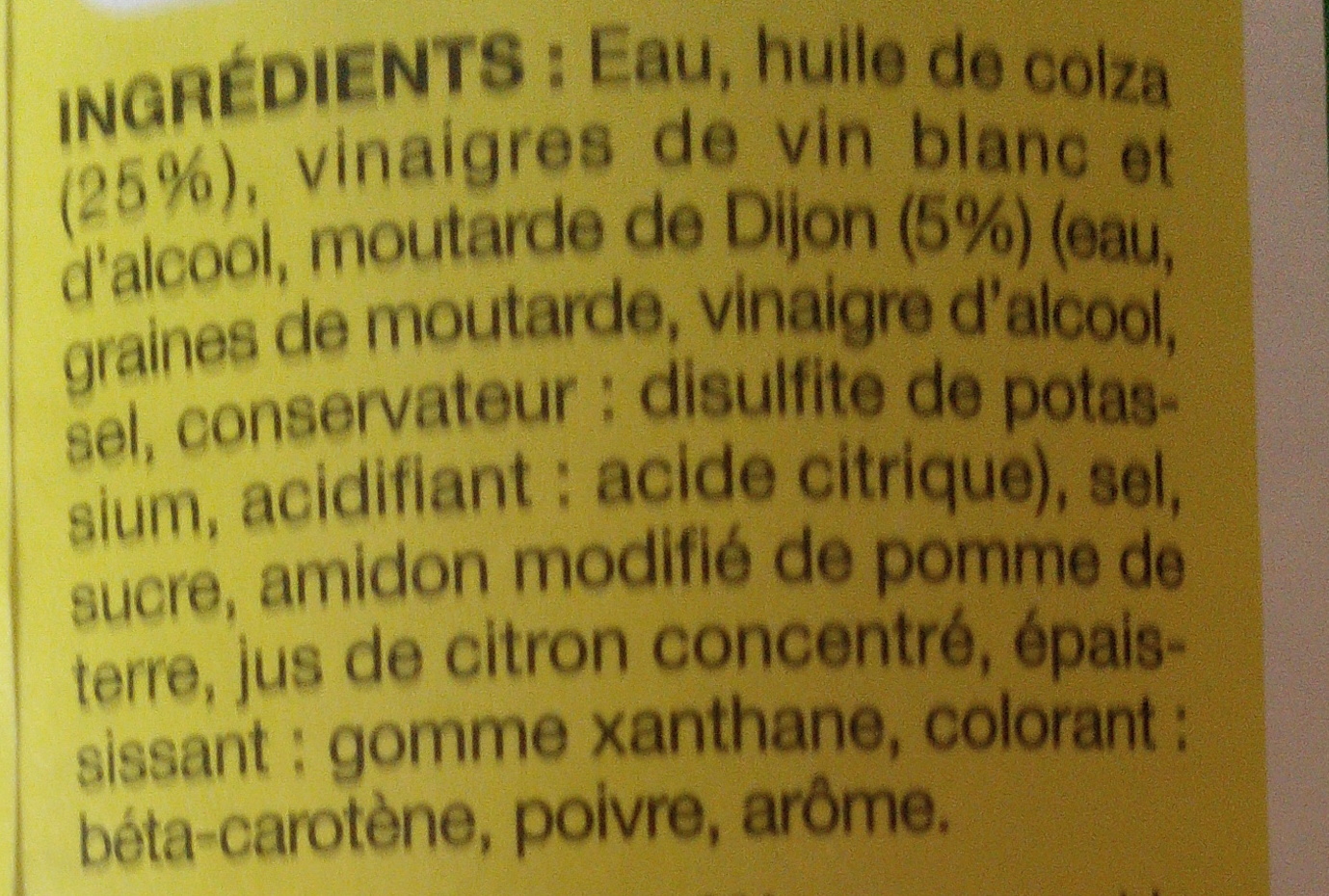Sauce salade nature allégée en matières grasses* - Auchan - 1 l
This product page is not complete. You can help to complete it by editing it and adding more data from the photos we have, or by taking more photos using the app for Android or iPhone/iPad. Thank you!
×
Some of the data for this product has been provided directly by the manufacturer AUCHAN APAW.
Barcode: 3596710132218 (EAN / EAN-13)
Common name: Sauce salade nature allégée en matières grasses*
Quantity: 1 l
Categories: Condiments, Sauces, Vinegars, Salad dressings, Vinaigrettes, fr:Vinaigrettes allégées en matières grasses, Groceries
Labels, certifications, awards:
Low or no fat, Low fat, Reduced fat, Green Dot, Made in France, Nutriscore, fr:Eco-Emballages
Manufacturing or processing places: Raismes, Nord, Nord-Pas-de-Calais, France
Traceability code: EMB 59491 - Raismes (Nord, France)
Stores: Auchan
Matching with your preferences
Environment
Carbon footprint
Packaging
Transportation
Other information
Preparation: :Bien agiter avant emploi
Report a problem
Data sources
The manufacturer AUCHAN APAW uses Agena3000 to automatically transmit data and photos for its products.
Product added on by sebleouf
Last edit of product page on by org-auchan-apaw.
Product page also edited by jacob80, kiliweb, openfoodfacts-contributors, packbot, quechoisir, roboto-app, tacite, yuka.RjVFNENyWU11T1FzdGN3OTF5ckl4OWhTOXM2SVUxT1FOK01BSVE9PQ, yuka.WUs4eU92Z0dxcVlLdTgwUDV6ek0yOUlsK0xpc1lWanJCN01LSVE9PQ, yuka.WUxJc0ZJWVJqUE1Mb3NKajhSL3cwWXh6OXBpWFhrR1VFN2NSSVE9PQ, yuka.WnFJTEhmZ1FqZG9TZ3ZZRHpET040OVJMK0xUeFptK3pJdllYSWc9PQ.











